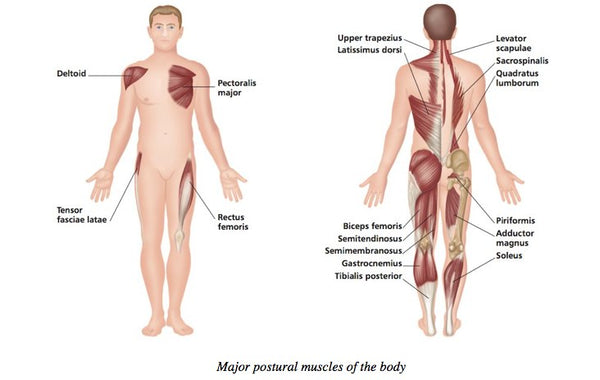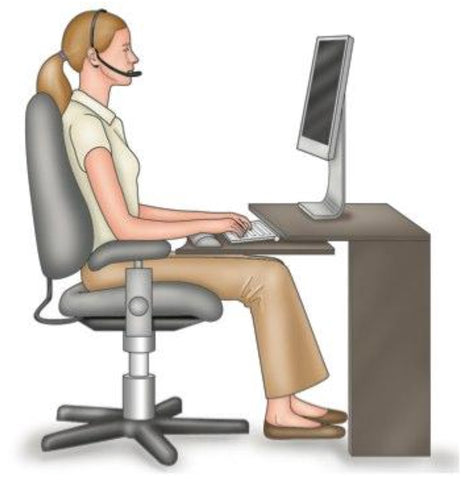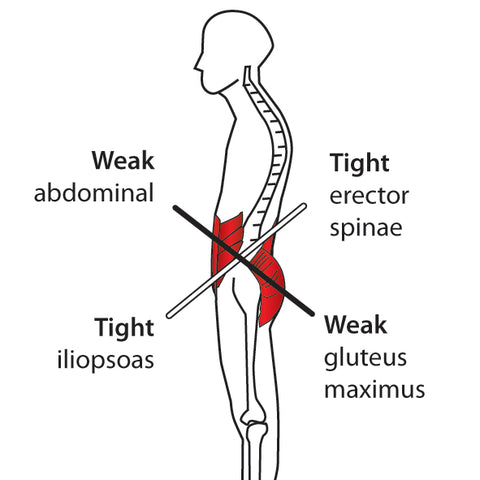Posted by Simeon Niel Asher on Sep 04, 2016

Poor posture is a powerful “activator and perpetuator” of myofascial trigger points
All muscles contain a blend of type 1 and type 2 fibers (Janda 2005; Lewit 1999). This has a direct correlation with how chronic symptoms might develop if left untreated.
Type 1 fibers are postural and tend to respond to stress or overuse by shortening and becoming hypertonic. A trigger point in a muscle with a high percentage of type 1 fibers may often take longer to respond to treatment.
Poor posture is a powerful “activator and perpetuator” of myofascial trigger points (Simons et al. 1998) and is always worth considering in chronic trigger point syndromes.
Postural muscles tend to have a greater percentage of type 1 fibers; this characteristic, as discussed, may lead to a more resistant type of trigger point. Human beings are four-limbed animals, and like our cousins, we are designed to move around and hunt for food. I am sure that if one put a gorilla in a chair all day, it would get a bad back!

Ideal sitting posture for those who work with computers - failure to take posture seriously can lead to long term injuries.
Changing Habits in the Workplace
It is a fact that in the developed world many occupations involve prolonged sitting, often at a computer screen. Ergonomics is a booming industry, focusing on the interactions of people and their working environments; however, not all workplaces can afford to implement proper ergonomic interventions.
For many people, long and monotonous days spent in front of a computer screen often lead to chronic and maladapted postures. Where possible, it is essential to identify the postural abnormalities and how they impact the patient’s symptoms, and offer to remedy the situation via ergonomic advice, treatment, and/or exercise.
The most common mechanical maladaptations are:
- Head-forward posture (upper crossed pattern, Janda)
- Round shoulders (upper crossed pattern, Janda)
- Head to one side—telephone posture
- Occupational/ergonomic stressors
- Slouched standing (lower crossed pattern, Janda)
- Slouched sitting (e.g. computer screen/ergonomics)
- Cross-legged sitting
- Habitual postures
- “Sway-back” posture (lower crossed pattern,Janda)
- Driving position
- Scoliosis
- Joint hypermobility
- Lifting/carrying
- Primary short lower extremity (PSLE)

Upper Crossed Pattern
Postural Trigger Points
Trigger points are common in the following postural structures: upper trapezius, levator scapulae, sternocleidomastoideus (SCM), erector spinae, musculoligamentous apparatus of the lumbar spine, gluteus medius, and gastrocnemius/soleus complex.
Postural Trigger Points and “Cross Patterns”
Osteopathic, chiropractic, and other physical therapeutic modalities have all observed “cross-patterned” relationships within the body, from upper to lower and left to right. Janda (1996) recorded the two most common “crossover” postural strain patterns—upper and lower. Myers (2001) has further explored and developed these observations in his seminal book Anatomy Trains. These myofascial strain patterns have a profound effect on the pathogenesis and chronicity of trigger point development.

Lower Crossed Pattern
Upper Crossed Pattern Syndrome
This can be observed in the “round-shouldered, chin- poking, slumped posture,” which also compromises normal breathing. In such cases, pain is often reported in the neck, shoulder, chest, and thoracic spine (these areas are often restricted). An oblique cross can be drawn through the glenohumeral joint, indicating the functional “crossover” changes in muscular relationships.
Lower Crossed Pattern Syndrome
This can be observed in the “sway-back” posture, with weak abdominals and gluteals and overtight erector spinae, quadratus lumborum, TFL, piriformis, and psoas major.
Simeon Asher was voted one of London's top 10 osteopath's by the London Evening Standard Newspaper. Simeon is a practicing osteopath who has been studying, researching, and teaching trigger point therapy for the last two decades. Simeon is the author of a number of best selling books and courses on trigger point therapy and is a regular guest lecturer in the UK, Europe, Scandinavia, and South America.
Комментариев нет:
Отправить комментарий